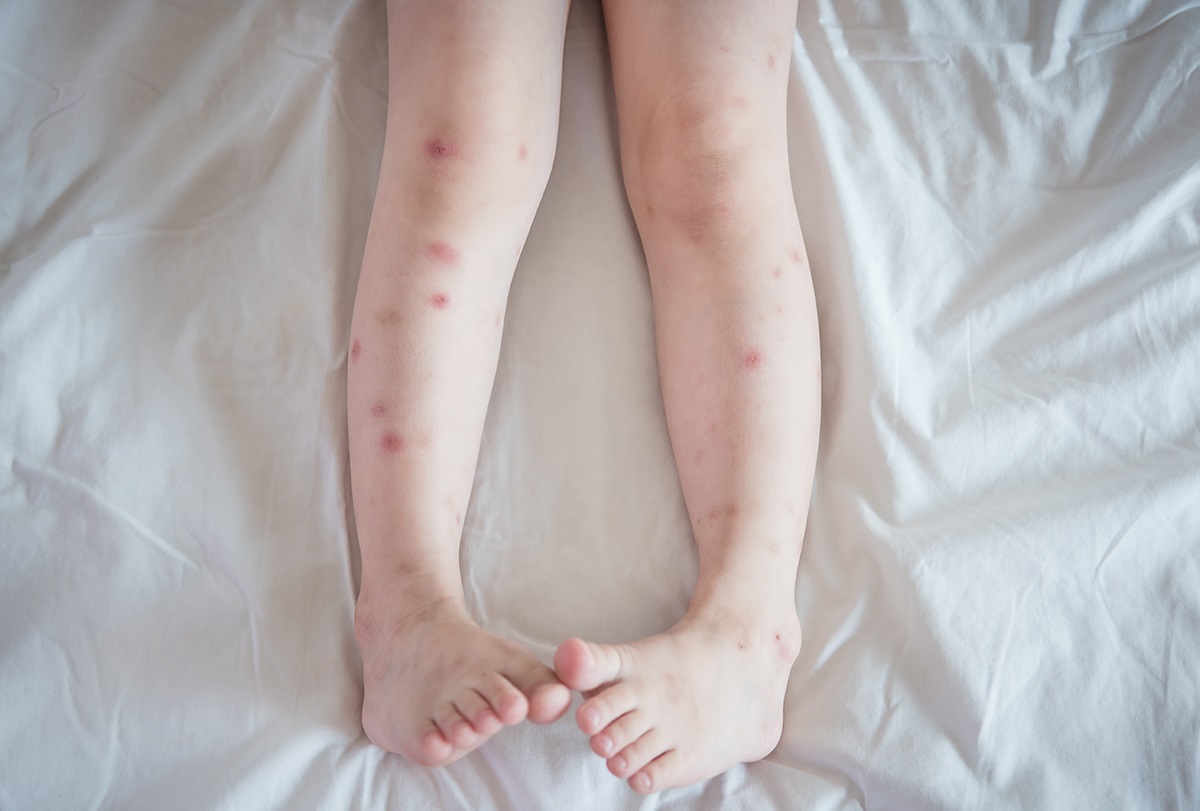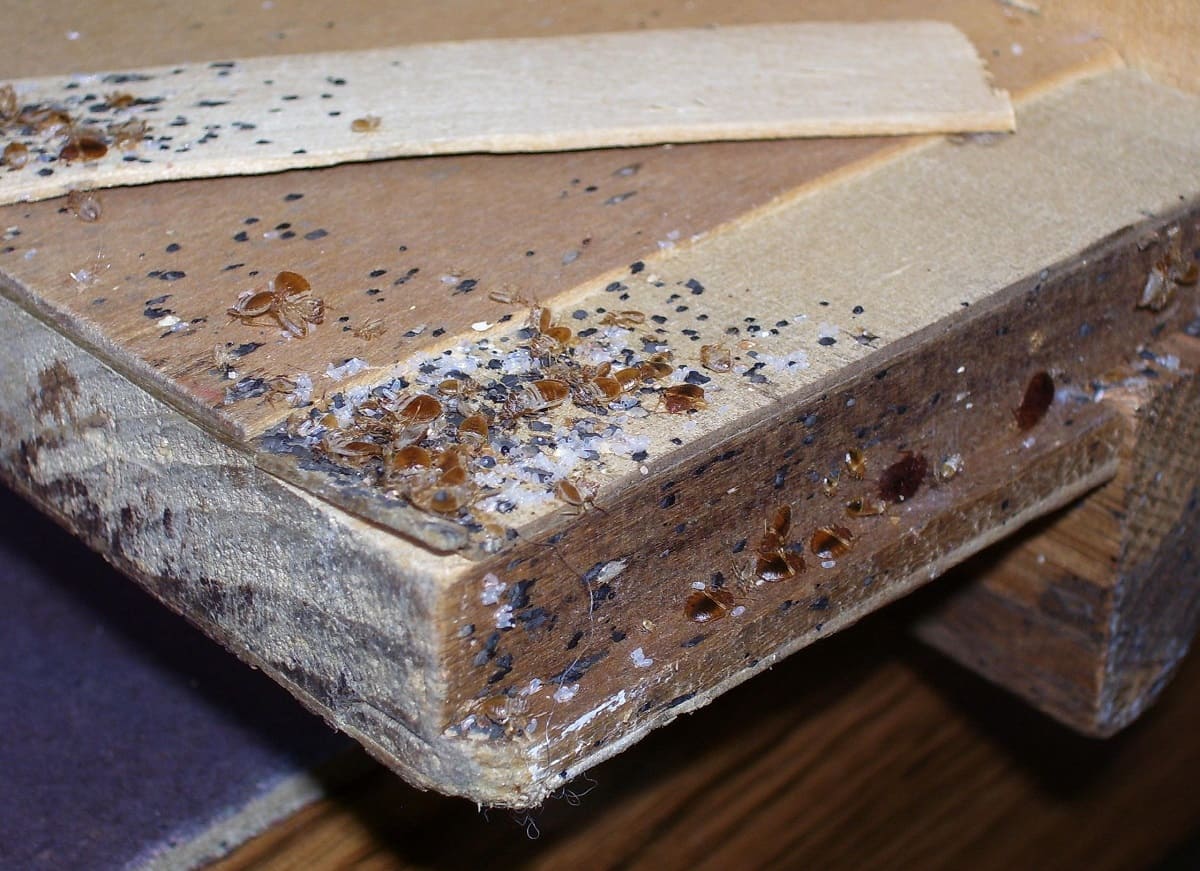Home>Furniture>Bedroom Furniture>How Long Does It Take For Bed Bugs To Starve


Bedroom Furniture
How Long Does It Take For Bed Bugs To Starve
Modified: October 28, 2024
Discover how long it takes for bed bugs to starve and protect your bedroom furniture from these persistent pests. Expert tips and insights available.
(Many of the links in this article redirect to a specific reviewed product. Your purchase of these products through affiliate links helps to generate commission for Storables.com, at no extra cost. Learn more)
Introduction
Welcome to the world of bed bugs! These tiny nocturnal pests have become a major nuisance in many households, causing sleepless nights and distress for homeowners. One common question that arises when dealing with a bed bug infestation is: How long does it take for bed bugs to starve?
Bed bugs are notorious for their feeding habits and their ability to survive for extended periods without a meal. Understanding this aspect of their biology is crucial for effectively eliminating them and preventing future infestations.
In this article, we will delve into the fascinating world of bed bugs and explore the factors that affect their survival timeline. We will also discuss the duration that bed bugs can survive without feeding and the signs to look out for when they are starving. Additionally, we will explore various remedies for eliminating bed bugs and regaining control of your bedroom.
Key Takeaways:
- Bed bugs can survive for up to 6-12 months without feeding, but factors like temperature and health affect their survival. Look out for signs of starving bed bugs, like decreased activity and lighter color.
- To eliminate bed bugs, consider professional pest control, heat treatments, and regular inspections. Prevention is key, so be cautious when traveling and inspect second-hand furniture to avoid infestations.
Read more: How Long Does It Take To Notice Bed Bugs
Understanding Bed Bugs’ Feeding Habits
Before we can dive into the topic of how long bed bugs can survive without feeding, it is essential to understand their feeding habits.
Bed bugs are parasitic insects that primarily feed on the blood of humans and animals. While they prefer humans as their primary host, they can also feed on other warm-blooded creatures if necessary. These pests are attracted to the carbon dioxide and warmth emitted by their hosts, making our beds and bedrooms the perfect feeding grounds.
Bed bugs have a unique feeding technique. They use their elongated mouthparts, known as a proboscis, to pierce the skin of their host and tap into a blood vessel. As they feed, they release an anticoagulant to ensure a steady flow of blood. Most people do not feel them bite, as their saliva contains an anesthetic that numbs the skin.
After feeding, bed bugs retreat to their hiding spots, usually within cracks, crevices, and mattress seams, where they digest their meal and lay eggs. These hiding places provide them with the necessary protection and warmth to survive until their next feeding.
Bed bugs typically feed every 5-10 days, although this can vary depending on environmental conditions and the availability of hosts. In ideal conditions, such as a consistently warm environment with an abundance of hosts, bed bugs can thrive and reproduce rapidly.
Understanding their feeding habits is crucial for tackling a bed bug infestation effectively. By disrupting their feeding cycle, we can limit their ability to reproduce and eventually starve them out.
Factors Affecting the Survival Timeline
While bed bugs can survive for extended periods without feeding, the exact duration can vary based on several factors. Understanding these factors will give us valuable insights into how long bed bugs can live without a meal.
1. Temperature and Humidity: Bed bugs are ectothermic creatures, meaning their body temperature depends on the surrounding environment. They thrive in temperatures between 70 to 80 degrees Fahrenheit and need humidity levels of around 70-80%. In colder temperatures, their metabolism slows down, and they can enter a state of dormancy, known as diapause, allowing them to survive longer without feeding.
2. Life Stage: The life stage of bed bugs also plays a role in their ability to survive without feeding. While adult bed bugs can survive for months without a meal, the nymphs, or immature bed bugs, have a shorter survival time. During their growth stages, nymphs require frequent blood meals to molt and develop into adults.
3. Health and Condition: Healthy and well-fed bed bugs have a better chance of surviving without a meal compared to weakened or malnourished individuals. A healthy bed bug has more energy reserves to sustain them during periods of starvation.
4. Past Feeding History: Bed bugs that have recently fed have a higher chance of surviving for an extended period without feeding. The blood meal provides them with the necessary nutrients and energy reserves to tide them over until their next meal.
5. Availability of Hosts: The presence and availability of hosts in the environment directly impact how long bed bugs can survive without feeding. If hosts are scarce or inaccessible, bed bugs may remain in hiding and enter a state of hibernation until a suitable meal source becomes available.
It is crucial to note that while these factors influence the survival timeline of bed bugs, they can adapt to changing conditions. If given the opportunity, bed bugs can survive for several months or even longer without feeding.
Duration Bed Bugs Can Survive Without Feeding
Bed bugs are renowned for their ability to survive long periods without feeding, making them resilient pests to eradicate. The exact duration that bed bugs can live without a blood meal varies based on factors such as temperature, life stage, health, and availability of hosts.
Under optimal conditions, adult bed bugs can survive without feeding for up to six to twelve months. However, this is not a common scenario, as they typically seek out hosts for regular meals. In less favorable conditions, such as lower temperatures or a lack of hosts, the survival time can be significantly shorter.
Nymphs, the immature bed bugs, have a shorter survival time without feeding compared to adults. They require regular blood meals to molt and develop into adults. Nymphs can survive around two to three months without feeding, but the duration may vary depending on their growth stage and health.
It is important to note that while bed bugs can survive for extended periods without feeding, they cannot reproduce without a blood meal. Regular feeding is essential for their survival and reproductive capabilities. However, it is always best to tackle a bed bug infestation swiftly to prevent their population from growing and spreading.
Bed bugs are opportunistic pests that can survive in various environments. Their survival instinct and ability to adapt to unfavorable conditions make them a formidable opponent. Proper treatment and preventive measures are crucial to rid your home of these pests and minimize the risk of reinfestation.
It’s important to address a bed bug infestation as soon as possible to prevent their numbers from growing. Seeking professional help or using effective treatments is recommended to ensure successful eradication.
Bed bugs can survive for several months without a blood meal, but they will start to starve after about 2-3 months. Regular inspection and treatment are important to prevent infestations.
Signs of Starving Bed Bugs
Bed bugs are resilient creatures that can survive for extended periods without feeding. However, even in their weakened state, they leave behind several signs of their presence. It is important to be aware of these signs, as they can indicate the presence of starving bed bugs and the need for immediate action.
1. Decreased Activity: Starving bed bugs become less active as their energy reserves deplete. They may retreat deeper into hiding places and become less visible during the day. However, if you notice an increase in activity during the night, it could indicate that bed bugs are desperately seeking a meal.
2. Smaller Size and Lighter Color: As bed bugs go without feeding for an extended period, they may become noticeably smaller in size and lighter in color. Starving bed bugs are often pale and translucent compared to their fully fed counterparts. Their bodies may appear shriveled and flat due to the lack of nourishment.
3. Sluggish Movement: Starving bed bugs have limited energy and tend to move more slowly. They may struggle to crawl or appear lethargic when disturbed. Observing sluggish movement or a lack of response to disturbances can be an indication of starving bed bugs.
4. Increased Aggregation: When bed bugs are hungry, they may become more desperate to find a suitable host. As a result, they may cluster together in large groups, seeking warmth and potential blood sources. If you notice larger concentrations of bed bugs in specific areas of your home, it could be a sign of starvation.
5. Unusual Behavior: Starving bed bugs may exhibit unusual behavior in their quest for a meal. They may venture out during daylight hours or bite more aggressively in an attempt to feed. This desperate behavior can lead to a higher incidence of biting and increased discomfort for the affected individuals.
6. Lack of Bite Marks: In the absence of feeding, bed bugs have no reason to bite unless extremely hungry. If you notice a decline in the number of new bite marks on your body or an absence of fresh blood stains on your bedding, it could indicate that bed bugs are reaching starvation.
It is important to note that the signs of starving bed bugs can vary depending on the severity of the infestation and the specific circumstances. If you suspect a bed bug infestation or are unsure about the signs you are observing, it is recommended to consult a professional pest control service for accurate identification and effective treatment.
Read more: How Long Does It Take Bed Bugs To Die
Remedies for Eliminating Bed Bugs
Dealing with a bed bug infestation can be a daunting task, but with the right remedies and strategies, you can regain control of your bedroom. Here are some effective methods for eliminating bed bugs:
- Professional Pest Control: Hiring a professional pest control service is often the most effective and efficient way to eliminate bed bugs. A licensed exterminator will have the expertise, equipment, and treatments necessary to eradicate the infestation thoroughly.
- Heat Treatment: Bed bugs are highly sensitive to heat. Heat treatment involves raising the affected area’s temperature to a level that is lethal for bed bugs and their eggs. Professional heat treatments or using specialized steamers can effectively kill bed bugs in mattresses, furniture, and other infested areas.
- Chemical Treatments: Insecticides specifically formulated for bed bugs are commonly used to treat infested areas. It is crucial to follow label instructions carefully and exercise caution while using them. Be sure to target all potential hiding spots, such as cracks, crevices, and furniture seams.
- Vacuuming: Regularly vacuuming infested areas can help reduce the bed bug population. Pay attention to mattress seams, bed frames, carpet edges, and other areas where they may hide. Dispose of the vacuum bag or empty the canister in a sealed bag to prevent reinfestation.
- Encasement: Encasing your mattress, box spring, and pillows in bed bug-proof covers can prevent future infestations. These covers trap any existing bed bugs inside and make it harder for them to feed or breed. Remember to keep the covers on for at least a year to ensure all bed bugs have died.
- Decluttering: Clearing clutter from your bedroom makes it more difficult for bed bugs to hide and reduces their potential hiding spots. Remove unnecessary items, seal clothing and belongings in plastic bags, and thoroughly inspect and clean all items before reintroducing them into the room.
- Laundry and Heat Treatment: Wash infested bedding, clothing, and linens in hot water and dry them on the hottest setting. The high temperatures will kill any bed bugs and their eggs. If washing is not possible, you can use a clothes dryer on high heat to achieve the same effect.
- Regular Inspections: After implementing the remedies, it is essential to maintain a regular inspection routine. Continually monitor the bedroom and other potentially infested areas for signs of bed bug activity. Early detection can prevent a small infestation from turning into a larger problem.
It’s important to remember that bed bug elimination may require a combination of these remedies and a consistent approach. Each infestation is unique, so it may take time and persistence to completely eradicate bed bugs from your home. If the infestation persists or becomes overwhelming, it is advisable to seek professional assistance.
Conclusion
Bed bug infestations can be a frustrating and challenging problem to deal with, but with the right knowledge and remedies, you can take control of the situation. In this article, we explored the feeding habits of bed bugs and the factors that can affect their survival timeline. We learned that bed bugs can survive for several months without feeding, but their ability to do so depends on various factors such as temperature, life stage, health, and availability of hosts.
While bed bugs can survive without feeding, they leave behind visible signs of their presence. Understanding these signs, such as decreased activity, smaller size and lighter color, and increased aggregation, can help identify infestations and the need for prompt action.
When it comes to eliminating bed bugs, there are several effective remedies to consider. Professional pest control services offer expertise and treatments that can target and eliminate the infestation efficiently. Heat treatments, chemical treatments, vacuuming, encasement, decluttering, laundry, and regular inspections are among the strategies that can help eliminate bed bugs from your home.
It’s important to note that dealing with a bed bug infestation requires diligence and persistence. It may take multiple treatments and ongoing monitoring to completely eradicate these pests. Seeking professional assistance is always a viable option, especially in severe or persistent infestations.
Remember, prevention is key. Taking proactive steps to protect your home from bed bugs can help minimize the risk of infestations. Inspect second-hand furniture, seal cracks and crevices, and be cautious when traveling to avoid bringing bed bugs into your living space.
In conclusion, while bed bugs can survive without feeding for extended periods, they are not invincible. By understanding their biology, recognizing signs of infestation, and implementing effective remedies, you can reclaim your bedroom and provide a comfortable, bed bug-free environment for you and your family.
Frequently Asked Questions about How Long Does It Take For Bed Bugs To Starve
Was this page helpful?
At Storables.com, we guarantee accurate and reliable information. Our content, validated by Expert Board Contributors, is crafted following stringent Editorial Policies. We're committed to providing you with well-researched, expert-backed insights for all your informational needs.














